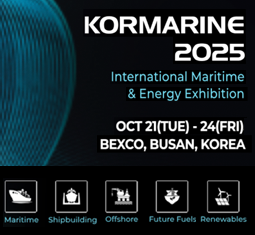Business News DNV issues GASA to HD Hyundai for ‘world-first’ hybrid super-strength …
페이지 정보
작성자 최고관리자 댓글 0건 조회 2,491회 작성일 24-05-14 19:27본문
DNV has presented HD Hyundai with a general approval for ship application(GASA) for a new high-strength composite hybrid support system for independent tanks on liquefied gas carriers. In a world-first, HD Hyundai’s concept is fabricated with a fusion of carbon fibre-reinforced plastics(CFRP) with a tensile strength ten times greater than steel, significantly enhancing structural stability.
The new system offers robust structural supports, enabling independent tanks to withstand upward force from floatation in case of hold space flooded. Designed jointly by Korea Shipbuilding and Offshore Engineering, HD Hyundai Heavy Industries and Hyundai Mipo dockyard, and approved by DNV and the Liberian International Ship & Corporate Registry(LISCR), the concept allows for reallocating of the existing support structure layout, minimizing the need for high-risk work and inspections.
Lee Hyun-Ho, Executive Vice President of Hyundai Maritime Research Institute at HD Hyundai Heavy Industries, said: "This is the result of another effort to apply composites to shipbuilding. It is expected to contribute to the competitiveness and safety of vessels with independent tanks and generate more orders as the design can be easily constructed.”
Thomas Klenum, Executive Vice President of Innovation and Regulatory Affairs at LISCR, added: “This innovation is a great achievement and demonstrates HHI, KSEO, and HMD’s dedication to performance, safety, and continuous improvement. The Liberian Registry is proud to have collaborated closely on this project with HD Hyundai and DNV."
Vidar Dolonen, DNV Regional Manager, Korea & Japan, said: "DNV is very pleased to be supporting forward looking partners like HD Hyundai on this exciting project. The use of new materials in this concept shows how continuous technological innovation in the maritime sector can enhance shipping’s drive to be even more efficient, improve safety, and enhance the structural stability of vessels."












